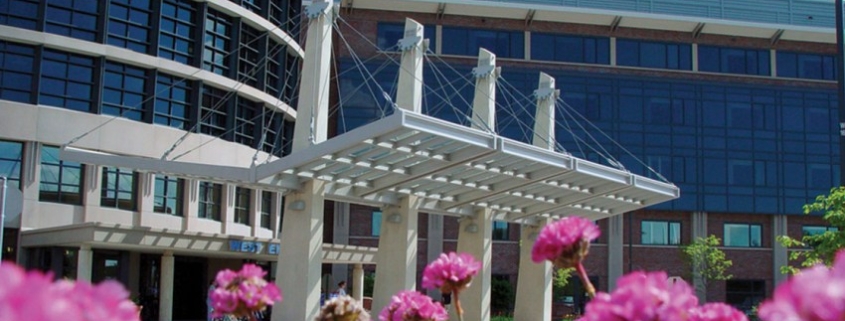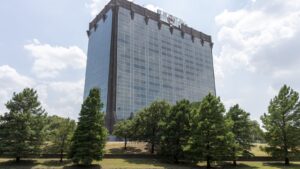Outpatient Health Care Services Driving CRE Income
Nationally it appears that there is insufficient square footage available to accommodate the significant growth seen in the healthcare real estate sector, with the rate of absorption outpacing new product deliveries, according to Northmarq.
“This has put national occupancy rates for medical office at a historic high,” Colin Cornell, Northmarq vice president, healthcare investment sales, tells GlobeSt.com. “We anticipate a steady stream of opportunities for investors in 2023, including newly developed facilities, new long-term leases on historically vacant MOBs, and retrofits of what were historically retail-oriented buildings.”
Cornell said that like most sectors, healthcare has been in the price discovery stage since interest rate increases began, but values seem to be settling somewhere between 2019 and 2021 levels.
“The investor demand is there, and the question is will owners be willing to meet that demand at the new return buyers requires,” Cornell said.
These investors are best to focus on outpatient services, according to JLL’s most recent Healthcare and Medical Office Perspective, which shows that outpatient sites dominate healthcare services delivery compared to hospital admissions.
Additionally, according to Kaufman Hall National Hospital Flash Report, outpatient revenue rose 8% in 2022, while inpatient revenue was flat when compared to 2021.
JLL’s report said that up to a third of hospital revenue is activity shifting to ambulatory surgery centers, office-based labs, and other ambulatory sites.
“More sophisticated procedures can be done in outpatient settings than possible a decade ago.” Amber Schiada, head of Americas work dynamics and industry research, JLL, said in prepared remarks. “Innovation in care combined with reimbursement pressures are driving a sustained shift to outpatient facilities, and consumer preferences for outpatient care have increased as well, as outpatient facilities are often more accessible or conveniently located. Furthermore, experience shows that outpatient locations are less expensive to build and operate, produce better-quality medical outcomes, and yield higher rates of patient satisfaction.”
Medical Office Space and Health Care Real Estate Producing Income
Allan Swaringen, President & CEO of JLL Income Property Trust, tells GlobeSt.com that medical office space, and healthcare-oriented real estate more generally, will continue to be a key piece of an income-producing, core fund such as JLL Income Property Trust.
“The extremely positive demographic trends driving tenant demand for this sector, combined with the often-long-term leases of tenants who look to serve their local population and often invest heavily in building improvements, create a scenario where owners can generate long-term, stable cashflow,” Swaringen said. “That’s why we have continued to construct a geographically diversified healthcare-oriented portfolio that today is valued at nearly $635 million and totals approximately 1.4 million square feet.”
The Continuum Of Care
Andrew Salmon, chief future officer at SALMON Health & Retirement, tells GlobeSt.com that given the aging demographics, it’s no surprise that we are seeing an explosion in need for outpatient facilities.
“What’s pivotal is the consideration for the continuum of care, as the 80+ population is forecasted to balloon nearly 50% in the next 10 years, and they will require both inpatient and outpatient opportunities as they age,” said Salmon. “Our goal is to establish the continuum of care across the aging population, to ensure that independent and assisted living opportunities exist with convenient, local access to major medical providers, allowing our residents to maximize the outpatient system while maintaining independence.”
Outpatient Services Leads To Higher Satisfaction
Doug King, national healthcare sector lead for Project Management Advisors, tells GlobeSt.com that healthcare providers have been actively positioning outpatient services closer to where their patients reside for at least a generation.
Outpatient facilities typically result in higher patient satisfaction, King said, and the challenges to outpatient facilities presented by telehealth and home healthcare are minimal as many clinical limitations and regulatory challenges exist for these two off-site methods.
“Decentralized ‘brick-and-mortar’ outpatient facilities will continue to grow,” according to King. “A vast majority of care will be occurring in outpatient settings, including urgent care centers, free-standing emergency departments, medical office/doctor offices, and ambulatory care facilities – outfitted to accommodate same-day surgical activities. In healthcare, we say, ‘follow the money’ and The Center for Medicare and Medicaid services are reviewing how reimbursement strategies can promote this model. An example is the growth of OBL (office-based labs) to house sophisticated surgical and imaging services performed on an outpatient basis.”
Developing, Rehabbing, Modernizing Facilities
Mitch Creem, principal of GreenRock Capital, tells GlobeSt.com that investors have always viewed medical office buildings as safe investments during uncertain financial times, primarily due to their historically proven resiliency during market downturns.
“But now, 75 years after the Boomer generation was born, we are expecting a ‘gray tsunami,’ fueling the need for additional healthcare services and many more sites of care,” Creem said. “Physicians, hospitals, real estate investment funds, and individual investors are all keen on developing new sites or rehabbing and modernizing existing buildings to provide state-of-the-art care and attract new patients.”
Deliver Care In Outpatient Settings More Economical
Brian Edgerton, senior vice president, healthcare services team – NAI Hiffman, tells GlobeSt.com that after historic growth in 2021-2022, the sector is not without headwinds.
“It saw rising cap rates and fewer starts and deliveries at the end of 2022,” Edgerton said. “In 2022, healthcare real estate developers kept busy delivering modern medical office buildings to accommodate health systems and large multi-specialty practices, including those seeking to consolidate multiple specialties under one roof in highly visible, patient-proximate locations. At the same time, developers are feeling the squeeze of construction cost increases, supply chain delays, and interest rate hikes, all of which are reflected in the higher rental rates that must be charged to make these deals pencil out. Yet, even if they’re paying more today than they would have a year ago, it is still more economical and efficient for providers to deliver care in outpatient settings, many of which are located in close proximity to where their patients live and work.”
Edgerton said that like retail, healthcare increasingly follows rooftops, so services are moving closer to the patient thanks to technological advancements that can more easily be implemented in newly developed and repurposed buildings, rather than the medical office building of 30 years ago.
When Choosing Project Sites, Demographics Matter
Craig Gambardella, vice president at TSCG MD, tells GlobeSt.com that clients understand that their property, and a potential fit for an outpatient healthcare facility within that particular property, is crucial in their decision-making.
“You must look at demographic, psychographic and prevalence of diseases in certain trade areas, and 5- to 10-year projected growth of not only disease prevalence, but how that translates to outpatient demands to help health systems forecast potential growth,” Gambardella said. “For example, the owner of a large mall that is looking to repurpose a portion of it into medical must accurately forecast the demand in that area for an outpatient facility, what types of clinical services may be needed, based on disease prevalence and 5- to 10-year projected growth.”
A Continued Extension Of Outpatient Services
Rich Steimel, senior vice president and principal in charge, healthcare, New York, at Lendlease said that throughout the industry, more procedures are taking place away from the main clinical facilities as there is a continued extension of outpatient services across metro areas and into the suburbs.
“This shift allows hospital campus operations a greater opportunity to expand and connect with a growing base of patients who require critical care but desire the convenience of off-campus facilities,” said Steimel.
Source: GlobeSt.








